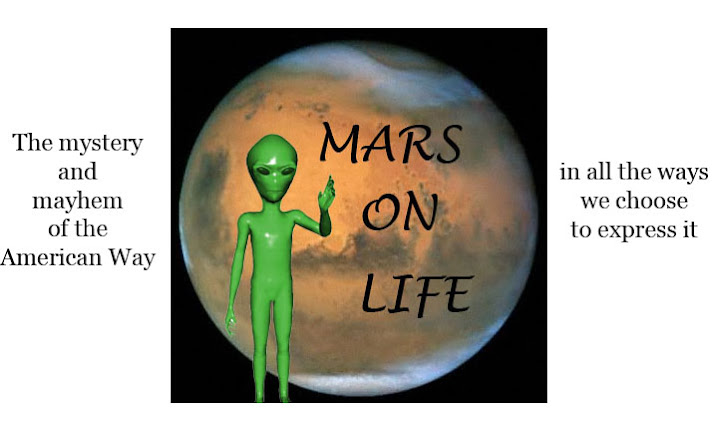Does anyone remember Rollin Binzer? Binzer was an album-cover and poster artist who directed the 1974 concert documentary Ladies and Gentlemen: The Rolling Stones. Binzer is such a footnote to film history that he doesn't even have his own Wikipedia entry, unlike Martin Scorsese, director of Shine a Light, Scorsese's gawker valentine to one of his favorite bands.
Ladies and Gentleman: The Rolling Stones has never been released to video or DVD. It vanished following a limited run 34 years ago and yet it remains the best footage of the band in its prime. Binzer followed the Stones around on the 1972 S. T. P. tour, capturing the band right before guitarist Mick Taylor decamped. The tour came directly after the release of Exile on Main St., the murky double album that the Stones recorded in the South of France.
Those who caught the film in its original run remember a band still picaresque with its outlaw image. Nineteen seventy-two was an archipelagic year for the Stones, who were then situated between the violent end of the 1960s and the jet set glamour of the disco era. Binzer 's work roiled with l'odeur de maquis from the band's nomadic lifestyle in Villefranche-sur-Mer, a period of time in which Keith Richards began shooting heroin in earnest. The set list for the S. T. P. tour comprised mostly material from Exile and Sticky Fingers and included "Tumbling Dice", a song performed at nearly every Stones concert subsequently.
Watching the 1972 footage of "Tumbling Dice" is to understand Mallarmé's coup de dés: A roll of the dice will never abolish chance. Three years after Altamont, the Stones are still surrounded by an air of risk, even as their staging seems--in light of the arenas to come--fairly primitive. No backup singers, no real spectacle, just the boys and their three sidemen chugging through the most scabrous album of the year. The music is gamey and rakish, unadorned and with an undercurrent of bluesy unrest that the band had carried on its shoulders since its Beggars Banquet days. In 1972, there was as yet no irony to the bilocated fetch of Jumpin' Jack Flash.
In contrast, Scorsese's Shine a Light looks like a corporate party, which it essentially was since it was filmed over two nights of a Clinton shindig and benefit back in the fall of 2006. The Stones are now the greatest party band in the world, if you can afford their fee. Whatever sense of disobedience the Stones had in their prime, it's gone now, replaced 20 years back with a bourgeois aesthetic antithetical to the Stones of Binzer's documentary. "Tumbling Dice" is now a feel-good party song scrubbed nearly as clean as the front row of the audience, all of whom are the type of fresh-faced young woman normally found near the stage of American Idol. They wave their hands and try to catch Jagger's eye, but he's professionally disengaged, the portrait of the rocker as professional product, aware of scale and his own mystique.
It isn't as if this journey into productville occurred overnight, and from the song selection it appears that Scorsese agrees; the newest number dates from 1983. That song, "She Was Hot," is the infant in a two-night pastiche of material spanning the 19 years from 1964-1983. The oldest song, "As Tears Go By," is the weakest link. Originally written for and recorded by Marianne Faithfull, the lament is treated to a mocking articulation that sounds like a biddy's elocution lesson. Somewhere in the middle, you realize that intimacy may not be all its cracked up to be: the camera gives you a personal tour of Jagger's dental work that leaves you wondering about the state of his right lateral incisor.
Scorsese used 18 cameras to catch the tiniest details of interaction in such a loving manner that it feels paternal. The director, who is a mere year older than the Glimmer Twins, looks like their grandfather. This isn't to say that the Stones look in any way rejuvenated; Richards' face still looks as if it's been sliced with a knife and Jagger's lips are suffering the downward pull of gravity. It's just that 63-year-old men do not normally move like marionettes, their lower limbs popping and angular. Nor do they normally soot their eyes with kohl. But Jagger is a long-distance runner and Richards outdistanced heroin. Jagger, it must be noted, has the hips of an eight-year-old girl.
The bloat that tends to plague classic rock acts is not accounted for here. In its place is something like what occurs in opera, where roles are carried throughout careers, ready to be performed with minimal thought or rehearsal. As the film opens, Jagger is assembling a set list while Scorsese presses for completion. There's no urgency to this task, even if Scorsese thinks differently; some of these songs have been on the road for 40 years.
Richards has gone beyond grizzled and is treated with fondness by both Scorsese and the audience. His plangent solo turn on "You Got the Silver," a song he wrote for Anita Pallenberg while she was filming Performance, would be almost epitaphic if you don't take into account his supernal powers of perseverance. He sings "Connection," another catalogue chestnut, with a firm grip on the joke of his own myth. Unlike Jagger, whose performing personality has remained consistent across the last two decades, Richards has gone from being rock's favorite death's head to its pet paterfamilias, a role he has accepted with both wit and grace. He looks like a dotty old aunt, the one who scandalized the family by appearing in an early blue movie and then spent her later years tipsy on pink gin.
The film's poster suggests a heroic meeting of entertainment gods, but this is Jagger's show all the way, the same as it was in Ladies and Gentleman: The Rolling Stones. Unless his ability to catch larger-than-life characters in base emotions is considered, Scorsese doesn't add any self-referential touches to the film. But then again, no one captures Jagger at base emotion. He does characterize rock's humblest performer, Charlie Watts, as a monosyllabic figure of deadpan mirth; despite prodding from an interviewer, the young Watts is unable to answer why he can't become an artist.
Scorsese peppers the film with flashback clips that aren't meant as part of narrative thread so much as they are counterpoint and comedic aside to the band's longevity. The lipsticked Jagger of 1972 tells Dick Cavett that he can easily imagine performing at the age of 60 (even if he once remarked that he couldn't see himself singing "Satisfaction" at 40); a very old clip of the Stones in drag (with Wyman and Jones) reminds us that at one point the band was seen as a menace to British society. Younger audience members may wonder what Jagger had done to rile the Church of England, but there he was on the BBC in 1967, defending himself to clerics. (It was his morality that was in question; he'd just been released from jail on a drugs charge and he and Faithfull lived together without benefit of marriage.)
Guest performers Jack White, Buddy Guy, and Christina Aguilera pop in to sing "Loving Cup," "Champagne and Reefer," and "Live With Me" respectively. Guy's is the best turn, he glowers as if he can't believe this skinny white boy is still trying to exhume the grave of the blues. Jagger smirks as he mimes dry humping Aguilera, but the effect isn't so much virile as it is ironic; he's old enough to be her grandfather and her lack of reciprocation shows that she knows it.
Scorsese keeps his film moving right along, although the inventive and intimate camera work fails at creating a level of excitement that permeated the earlier Binzer work. This isn't Scorsese's fault. The Stones lack the cultural relevance they once had and you find yourself not looking for portent and message but for physical details, like the odd way that Jagger curls his upper lip around consonants.
A partial set list for the film includes "Sympathy for the Devil" (a song the band had stopped performing in 1972), "All Down the Line," "Shattered," "Satisfaction," "Start Me Up," Jumpin Jack Flash," and "Far Away Eyes," on which Ron Wood plays pedal steel guitar. What they didn't play--or what was edited out--were songs with violent imagery: "Midnight Rambler" and "Gimme Shelter." The words "rape" and "murder" have been mothballed for the new generation, even if it's doubtful that today's Jagger could make them seem as ominous as he once did. It's hard to imagine Dorothy Rodham--Hillary's mother--singing along. Still, at one point the malevolent aura of those lyrics was a metaphor for band's dark passage through the end of the 1960s and their tax exile on the Côte d'Azur. Scorsese's sanitized Stones still rock and probably always will, but there's a new safety about their image that makes their past seems no more harmful than a dog-eared history book. The Stones have been a family event for the past decade. There were a number of young teens in the audience, chaperoned by balding fathers. This is, after all, a film that carries a parental warning about smoking.










6 comments:
The trailer of the Scorsese already put me right off and the over-enthusiasm of everything, (quite literally SHINING with light)was a little too much to take.... now you've got me intrigued by Binzer's film
SB, you can catch a few clips of Binzer's work on YouTube.
I catched a few so - so programns about the Rolling Stones before (one of it with them in the circus of all places..), but the Binzer film actually sounds quite interesting. I'm really fascinated by the early era Rolling Stones, though not as much as I am by their girlfriends!
ps: also, thank you very much for the link for the Norweigian programn. I'm going to savour that..
I've been planning to see this. Thanks for the review.
I'm a big stones fan. Fantastic review ;)
I'm going to see Shine a Light, but I have a feeling its going to disappoint. I am a big fan of the Last Waltz and shine a light look so staged and hokey. I guess I'll just have to see.
Post a Comment